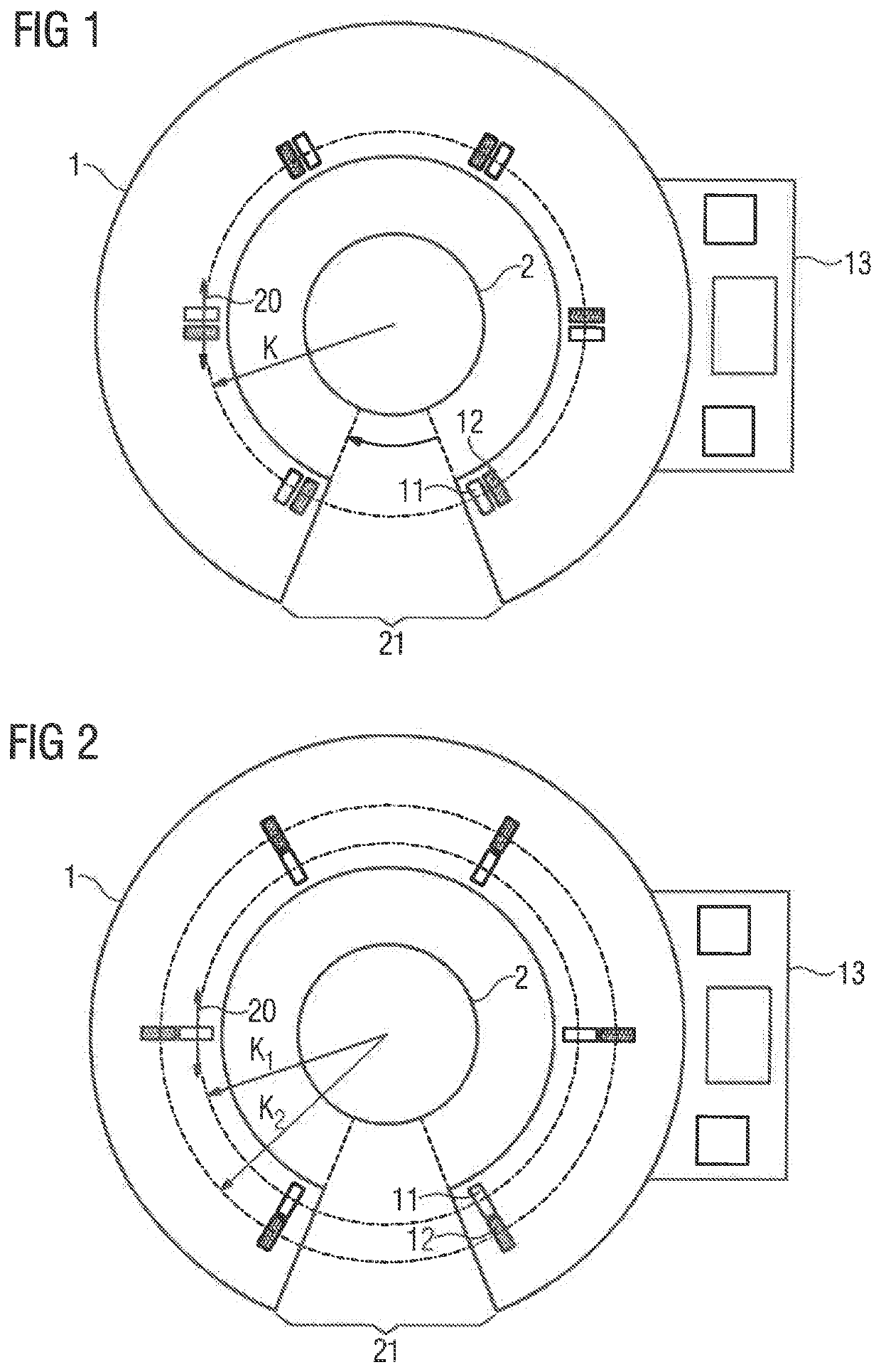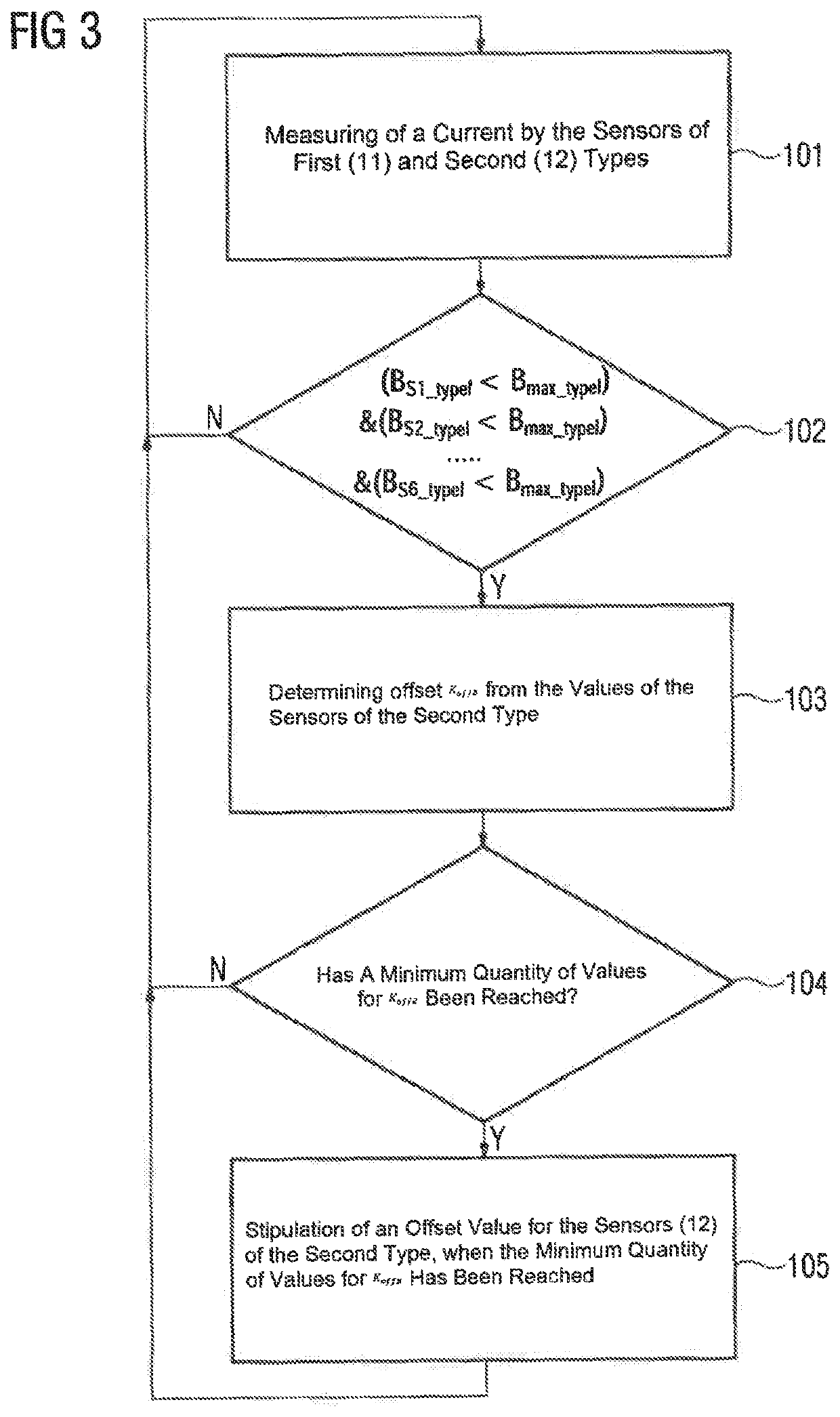Method for measuring a current, and current-measuring device
a current and measurement device technology, applied in special purpose recording/indication devices, instruments, magnetic field offset compensation, etc., can solve the problems of limited measurement range of sensor arrangement, comparatively great offset error, and difficulty in adding analog or digital offset stabilization, etc., to achieve good measurement results, increase the accuracy, and extend the measurement range
- Summary
- Abstract
- Description
- Claims
- Application Information
AI Technical Summary
Benefits of technology
Problems solved by technology
Method used
Image
Examples
Embodiment Construction
[0024]FIG. 1 shows a first exemplary embodiment of a current-measuring device 1 around an electrical conductor 2. Here, the current-measuring device 1 has a multiplicity of sensors 11 of a first type and, adjacent to this in each case, a plurality of sensors 12 of a second type. In this exemplary embodiment, adjacent means that the spacing between two sensors is smaller than the smallest extent of the sensors. The types differ, for example, in their measuring principles in this context. The sensors of different types are arranged on a common circular path K. In this context, the arrangement takes place such that the field orientation 20 which can be measured by the respective sensor is oriented tangentially to the circular path. In order to be able to evaluate the measurement signals of the individual sensors, the current-measuring device 1 has an evaluation electronics unit 13. In order to arrange the measuring device 1 around the electrical conductor in a simple manner, it has pro...
PUM
 Login to View More
Login to View More Abstract
Description
Claims
Application Information
 Login to View More
Login to View More - R&D
- Intellectual Property
- Life Sciences
- Materials
- Tech Scout
- Unparalleled Data Quality
- Higher Quality Content
- 60% Fewer Hallucinations
Browse by: Latest US Patents, China's latest patents, Technical Efficacy Thesaurus, Application Domain, Technology Topic, Popular Technical Reports.
© 2025 PatSnap. All rights reserved.Legal|Privacy policy|Modern Slavery Act Transparency Statement|Sitemap|About US| Contact US: help@patsnap.com


